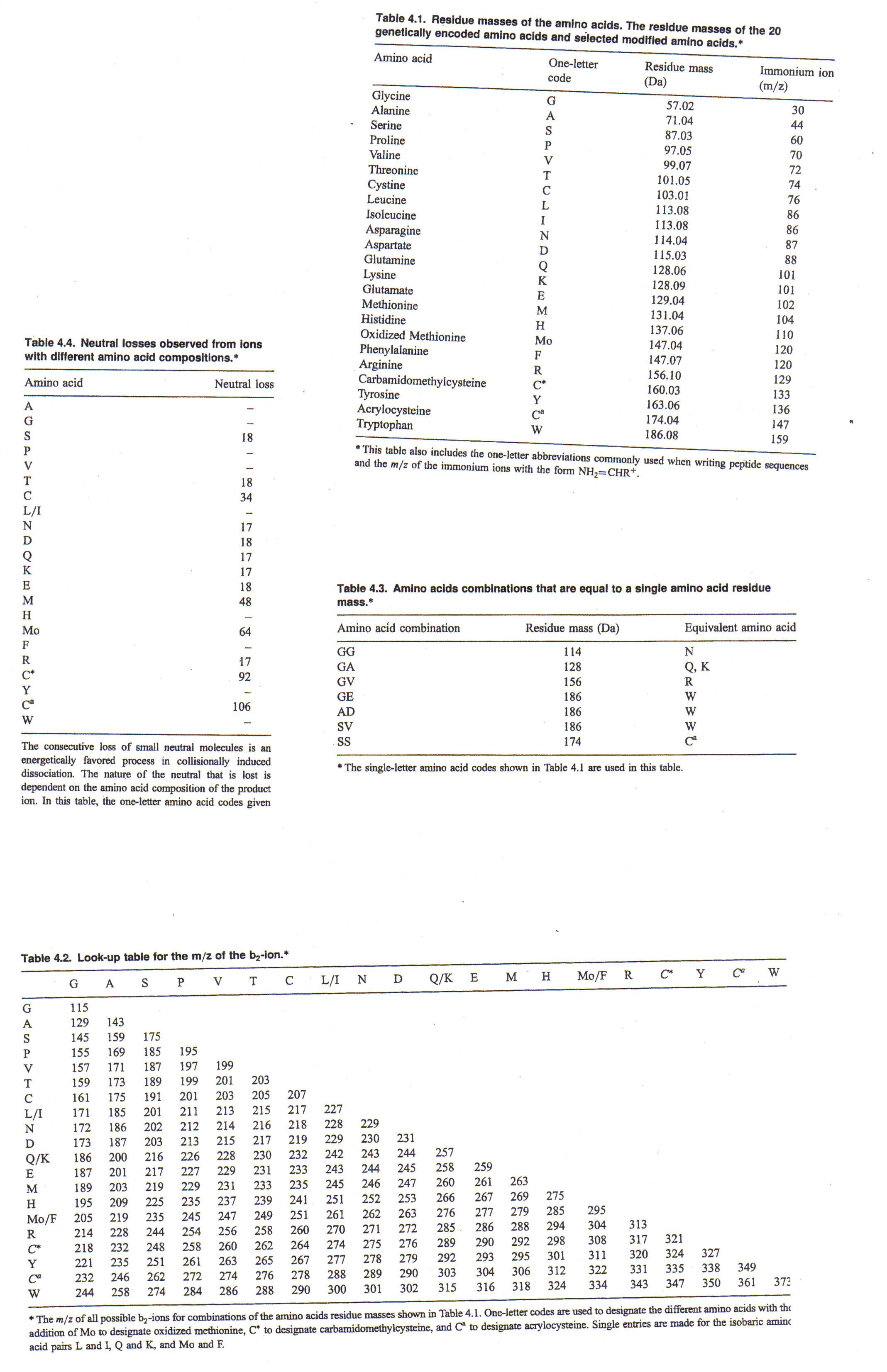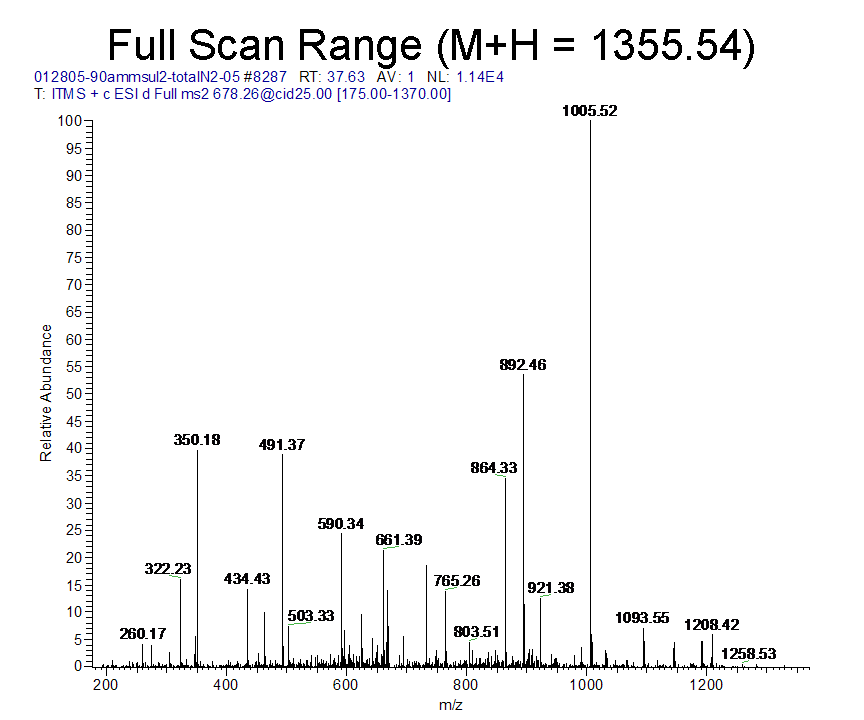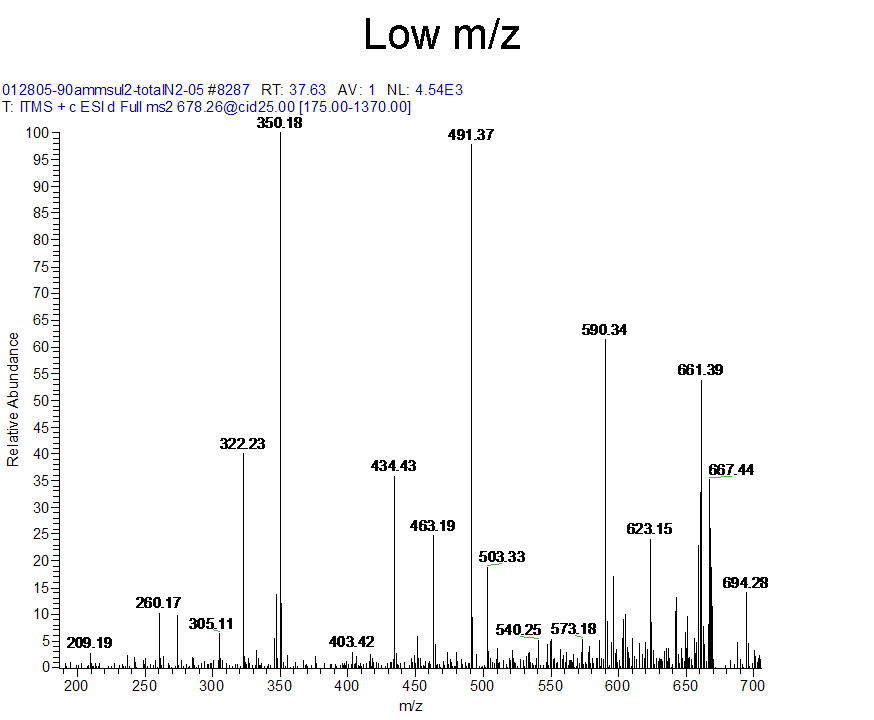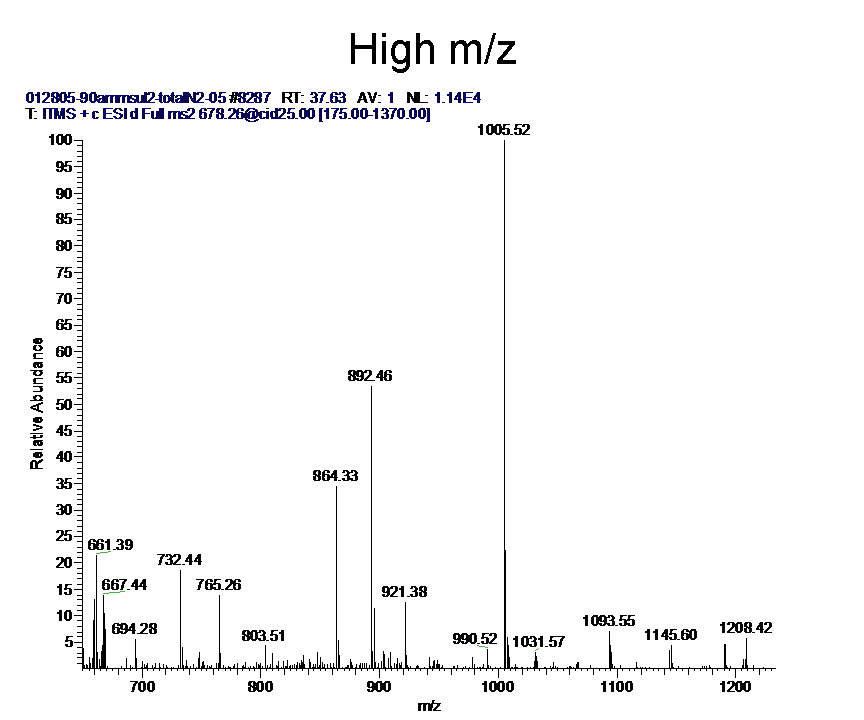Adapted from Kinter and Sherman, Protein Sequencing and Identification by Tandem Mass Spectrometry, (2000)
- 1) Inspect the low-mass region for immonium ions. Immonium ions indicate the presence of amino acids within the peptide.
- 2) Inspect the low-mass region for the b2-ion. Generally recognized by the b2-ion/a2-ion pair separated by 28 m/z. The m/z of the b2-ion is then used to calculate the mass of the corresponding yn-2-ion.
- 3) Inspect the low-mass region for the y1-ion. This will assign the C-terminal amino acid. An ion at m/z 147 indicates C-terminal lysine, whereas, an ion at m/z 175 indicates C-terminal arginine. The m/z of the y1-ion is then used to calculate bn-1-ion
- 4) Inspect the high-mass region for the yn-1 ion. Based on the combinations indicated by the b2-ion assign the N-terminal amino acids.
- 5) Extend the y-ion series toward the lower m/z. As a y-ion is identified, calculate the m/z of the corresponding b-ion and identify that ion in the spectrum.
- 6) Extend the b-ion series toward higher m/z. As a b-ion is identified, calculate the m/z of the corresponding y-ion and identify that ion in the spectrum.
- 7) Calculate the mass of the proposed peptide sequence. Compare this with the measured mass.
- 8) Reconcile the amino acid content with the spectrum data. Check that the amino acid content agrees with the immonium ions observed. Also consider the charge state of the peptide in terms of the presence of histidine, and internal lysine and arginine residues. Consider the intensity of proline peaks.
- 9) Attempt to identify all ions in the spectrum. Work to identify the other ions in the spectrum based on the proposed peptide sequence and pay particular attention to the ions from the loss of H2O, NH3, and HSOCH3; any doubly charged ions; and any ions due to internal cleavages.




